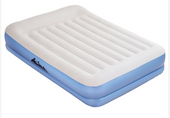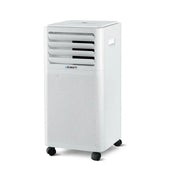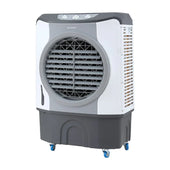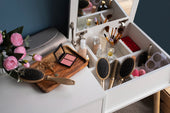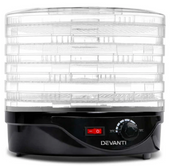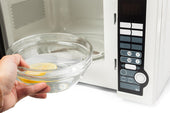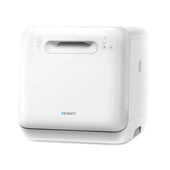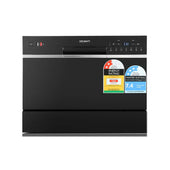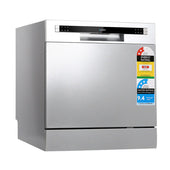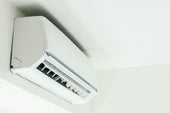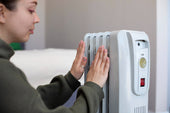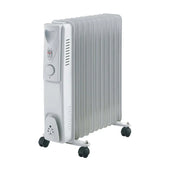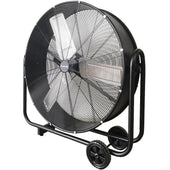Understanding the Importance of a Clean Bathtub
A clean bathtub is essential not only for aesthetic purposes but also for maintaining health and hygiene. Regular cleaning helps eliminate soap scum, mould, and bacteria that can thrive in damp environments. These can pose risks to skin health and may lead to unpleasant odours.
An unclean bathtub can damage its surface over time, as grime and residues may cause staining or corrosion. Proper maintenance ensures that the bathtub remains durable and prolongs its lifespan.
Additionally, a clean bathing space creates a more relaxing atmosphere. Consistently addressing cleanliness during days enhances not only the bathroom’s appearance but also ensures a safer, more sanitary bathing experience.
Gathering the Essential Cleaning Tools and Products
Keeping a bathtub sparkling clean begins with having the right tools and products on hand. A soft sponge or non-abrasive scrubbing brush is ideal for tackling grime without damaging the surface. Microfibre cloths are helpful for drying and polishing the finish. White vinegar, baking soda, or a mild dish soap can serve as effective, eco-friendly cleaning solutions. For tougher stains, specialised bathtub cleaners or diluted bleach may be required.
Protective gear, like gloves, safeguards against harsh chemicals and dirt. Ensure good ventilation by opening windows or turning on fans before cleaning. Always follow product instructions and test in an inconspicuous area.
Step-by-Step Guide to Daily Maintenance
- Rinse Thoroughly After Each Use After each bath or shower, rinse the bathtub's surface with warm water to remove soap residue, dirt, and excess oils. This helps to prevent a build-up over time and keeps the surface looking fresh.
- Wipe Down the Tub Use a soft cloth, sponge, or microfibre towel to dry the bathtub. Pay attention to corners and crevices where water might pool. A quick wipe daily helps to reduce mineral stains and mould growth.
- Address Stains Immediately If stains or marks appear, spot-clean them promptly using a mild bathroom cleaner or baking soda paste. Apply the cleaner gently with a non-abrasive sponge to avoid damaging the tub's surface.
- Dry Fixtures After rinsing the tub, make sure to dry the taps and handles. Use a soft cloth to prevent water spots or calcium deposits from forming on metal fixtures.
- Ensure Proper Ventilation Leave the bathroom well-ventilated after every use by opening windows or running the exhaust fan. This reduces moisture levels and prevents mould and mildew from developing.
How to Tackle Stubborn Stains Effectively
Removing stubborn stains from a bathtub requires the right approach and the correct tools. First, identify the stain's origin. Rust, mildew, or soap scum requires tailored solutions. Rust stains may respond well to a paste made from bicarbonate of soda and water. Spread the mixture over the affected area, let it sit for 15 minutes, and scrub gently with a non-abrasive pad. For mould or mildew, a diluted bleach solution can be sprayed, left to sit, then wiped away carefully. Combining white vinegar with dish soap can combat ingrained soap scum. Always ventilate the room and wear gloves while handling cleaning agents.
Natural Cleaning Alternatives: Eco-Friendly Solutions
Using natural cleaning products reduces exposure to harsh chemicals and benefits the environment. Baking soda, with its gentle abrasive texture, effectively combats soap scum and stains. White vinegar helps dissolve mineral deposits, disinfects surfaces, and eliminates odours. Lemon juice, packed with natural antibacterial properties, enhances cleaning while leaving a fresh scent. A paste made from water and baking soda can be an excellent tool for scrubbing stubborn grime. Mixing vinegar and water creates a powerful anti-mould spray. For regular maintenance, combining essential oils like tea tree oil with water creates an aromatic and eco-friendly cleaner. Always patch-test before applying homemade solutions.
Preventing Soap Scum and Hard Water Build-Up
Preventing soap scum and hard water build-up in the bathtub is essential for maintaining a clean appearance. Regular maintenance can stop residue from accumulating on surfaces.
- Rinse the Tub After Each Use: Encourage rinsing the bathtub with warm water after every use to reduce mineral deposits and soap residue.
- Use a Daily Shower Spray: Sprays designed to minimise build-up should be applied daily to keep the bathtub sparkling.
- Install a Water Softener: A water softener reduces the mineral content in hard water, effectively preventing stubborn calcium or lime stains.
- Opt for Liquid Soap: Liquid soap leaves less residue compared to bar soap, making it a suitable alternative.
- Wipe the Tub Dry: Employ a squeegee or microfiber cloth to dry surfaces after rinsing, avoiding water stains.
The Role of Proper Ventilation in Keeping Your Bathtub Fresh
Proper ventilation is a critical factor in maintaining the freshness of your bathtub. Adequate airflow helps prevent excessive moisture buildup, which can lead to mould, mildew, and unpleasant odours. It ensures that the bathroom stays dry after bathing or showering, reducing the chances of soap scum adhering to surfaces.
Effective options for enhancing ventilation include:
- Installing exhaust fans: These draw out steam and promote air circulation.
- Opening windows: Natural light and fresh air can help minimise dampness.
- Using dehumidifiers: Ideal for bathrooms without good airflow.
Regularly airing the space combats humidity, protecting tub surfaces from discolouration and prolonging their cleanliness.
Deep Cleaning Tips for a Thorough Refresh
- Choose the Right Cleaning Products Opt for a non-abrasive cleaner designed for your tub’s material, such as acrylic, porcelain, or enamel. Avoid harsh chemicals that can cause damage.
- Tackle Stubborn Stains with Baking Soda Sprinkle baking soda over stains, then spray with vinegar. Let the mixture fizz for 10-15 minutes before gently scrubbing with a soft sponge.
- Use a Toothbrush for Nooks and Crannies For grout lines, edges, and hard-to-reach corners, a toothbrush dipped in the cleaning solution ensures precision cleaning.
- Combat Soap Scum Mix equal parts vinegar and dish soap, apply it to soap scum, and let it sit for 20 minutes. Wipe clean with a microfibre cloth.
- Rinse and Dry Thoroughly After cleaning, rinse the bathtub with warm water and dry with a soft towel to prevent water spots and residue build-up.
How to Maintain Different Bathtub Materials
Proper care for bathtubs varies depending on their material. Here is a guide tailored to specific types:
Porcelain Bathtubs
- Cleaning: Use non-abrasive cleaners and soft sponges to prevent scratching.
- Maintenance: Address minor chips promptly with porcelain repair kits.
- Tips: Avoid harsh chemicals which might degrade the finish over time.
Acrylic Bathtubs
- Cleaning: Wash with mild soap and warm water using a microfibre cloth.
- Maintenance: Avoid abrasive scrubbers or chemical cleaners that can cause discolouration.
- Tips: Keep temperatures moderate to prevent material warping.
Cast Iron Bathtubs
- Cleaning: Use gentle detergents to clean their enamel coating.
- Maintenance: Wax the surface occasionally to preserve shine and reduce staining.
- Tips: Dry the bathtub thoroughly to prevent rust formation.
Fibreglass Bathtubs
- Cleaning: Opt for speciality cleaners designed for fibreglass surfaces.
- Maintenance: Avoid heavy impacts that can crack the material.
- Tips: Regular polishing can restore the bathtub’s original lustre.
Common Mistakes to Avoid When Cleaning Your Bathtub
- Using Abrasive Materials: Scrubbing with harsh pads or steel wool can cause scratches on the surface, especially on acrylic or porcelain tubs. Opt for soft sponges or microfibre cloths instead.
- Overlooking Ventilation: Ignoring proper ventilation while cleaning can lead to a buildup of fumes from cleaning products, which may be harmful. Always ensure windows are open or use an exhaust fan.
- Mixing Cleaning Products: Combining different cleaners, such as bleach and ammonia, can produce toxic gases. Stick to one product or verify compatibility before mixing.
- Skipping Rinse Steps: Failing to rinse off cleaning agents thoroughly can leave residues, which may dull the tub’s finish over time or cause irritation during baths.
- Using Excessive Force: Applying too much pressure while scrubbing can damage delicate finishes. Gentle, consistent motions work best for effective cleaning without harm.
- Neglecting Regular Maintenance: Allowing grime to build up can make cleaning more challenging. Consistent upkeep prevents tough stains from forming and prolongs your bathtub’s life.
Tips for Long-Term Sparkling Clean Bathing Spaces
- Ventilation is key: Ensuring proper aeration reduces moisture build-up, preventing mould and mildew growth. Open windows or use exhaust fans after baths.
- Regular cleaning routine: Wipe down the tub after every use to prevent soap scum accumulation. Weekly deep cleans can maintain shine and hygiene.
- Choose non-abrasive cleaners: Mild cleaning agents protect bathtub surfaces. Avoid harsh scouring pads that may cause scratches.
- Rinse thoroughly: Residues from cleaning products can attract dirt; rinsing removes residues and protects finishes.
- Use protective measures: Non-slip mats can safeguard surfaces, while bath salts and oils must be rinsed away promptly to prevent staining.
- Inspect frequently: Early identification of cracks or stains ensures timely remedial cleaning or repairs, preserving overall cleanliness.
How Often Should You Clean Your Bathtub?
The frequency of cleaning a bathtub depends on usage and individual circumstances. Regular cleaning minimises soap scum, mould, and bacteria buildup, ensuring hygiene and extending its lifespan.
- Weekly cleaning is recommended for households with frequent use. This helps maintain cleanliness and avoids stubborn stains from forming.
- Monthly deep cleaning is ideal to target hard-to-remove grime, especially in areas that might be overlooked during routine cleans.
- Immediate cleaning after heavy use—such as in case of hair dye spills or muddy water—prevents permanent staining.
- Less frequent cleaning may suffice for bathtubs in guest bathrooms or rarely used spaces, typically every few weeks.
Consistency prevents harder-to-clean buildup, saving time and effort long term.
Expert Recommendations for Safe and Efficient Cleaning
- Choose Non-Abrasive Cleaners: Experts advise using non-abrasive cleaning agents to avoid scratches on delicate bathtub surfaces like enamel, acrylic, or porcelain.
- Ventilation is Key: Keeping windows open or using a fan prevents the buildup of harmful fumes, especially when cleaning with strong solutions.
- Use Microfibre Cloths: These are highly effective for scrubbing without damaging surfaces. Sponges with a soft side are also a suitable alternative.
- Rinse Thoroughly: Residue from cleaning products can lead to stains or soap scum buildup, so rinsing the tub completely after cleaning is essential.
- Spot-Test Cleaning Solutions: Before applying any new product, perform a small spot test to ensure it won’t damage the material or finish.
Maintaining Your Bathtub’s Shine with Minimal Effort
To preserve your bathtub’s gleaming finish, regular light cleaning is essential. Use a soft sponge or microfibre cloth to wipe the surface after each use, preventing the buildup of soap scum and water stains. Non-abrasive cleaners, such as white vinegar or dish soap mixed into warm water, are ideal for daily upkeep without damaging its finish.
Place a bathroom mat nearby to reduce dirt accumulation, and rinse the tub thoroughly after use to remove residue. Avoid harsh chemicals and abrasive scrubbers, which can cause scratches. For keeping the shine intact, apply car wax to the bathtub once or twice a year for a protective layer.
Design Hacks to Simplify Bathtub Care and Cleaning
Keeping a bathtub clean can be made easier by incorporating smart design choices. Consider installing smooth, non-porous materials like acrylic or porcelain, as they resist staining and are easier to wipe down. Opt for frameless shower enclosures, which eliminate hard-to-reach corners that trap grime.
If possible, choose bathtubs with built-in sloped edges or drain channels, which help to minimise water pooling and reduce soap scum build-up. Wall-mounted taps and showerheads help keep the area underneath free of clutter, simplifying scrubbing.
Lastly, adding removable silicone caulking can make cleaning grout lines a breeze, and using lift-off panels can provide easy access to plumbing for routine maintenance.










